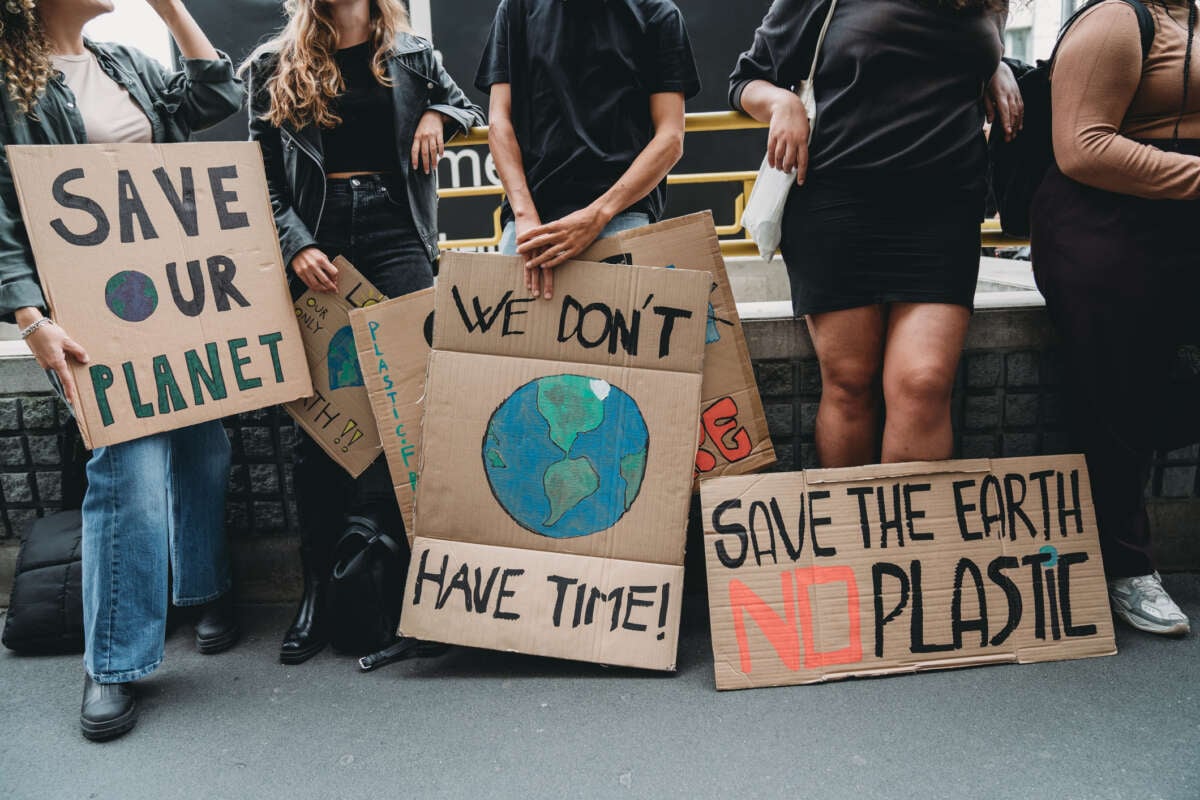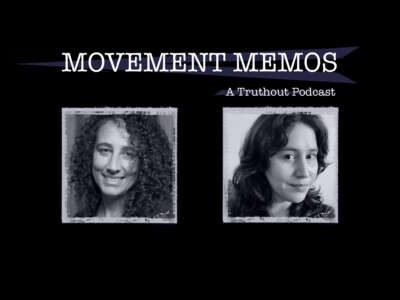When we envision a sustainable future, we can show people that there is something worth fighting for, not just against.
By Kwolanne Felix ,
November 12, 2023

As a climate activist struggling against slow-moving policies, influential Big Oil companies and public apathy, I’m mostly focused on stopping a future I don’t want. I fear a future where fossil fuels aren’t phased out in time, leading to ecological destruction and the destabilization of society due to climate change.
Yet, I find that pinpointing the future we do want is often much more difficult in the climate movement. Imagining this hopeful climate future is an essential practice because it helps sustain our movements, informs our advocacy and inspires action.
It’s pretty easy to imagine a world where we don’t intervene in the climate crisis in time. The narrative surrounding our climate and the future is overwhelmingly dystopian. Look no further than a long list of dystopian movies, shows, art and books set in a near-future ecological wasteland. These media tropes are popular and are shown in box office hits like Interstellar, Blade Runner and shows like “The 100.” Many of us are experiencing a glimpse of a terrifying dystopia as we witness the devastation of intensifying natural disasters and pollution. Many people believe we’re already doomed. Within this mindset, the climate movement is challenged in creating counternarratives to this doom-and-gloom expectation.
Established systems of oppression are skilled at making the current state of affairs seem inevitable. The climate crisis is no exception. The overproduction and overconsumption driving the climate crisis is often explained as “the selfishness of human nature,” or an inevitable cost of “population growth.” But this overlooks the fact that humans have been around for millions of years and have lived relatively sustainable lives. It’s only in the last few centuries that overconsumption of resources, including fossil fuels, has caused such extraordinary ecological degradation. These short-sighted explanations often stifle climate action and create a sense of hopelessness. To break out of this limited vision, climate activists must tap into collective imagination.
RELATED STORY
Yet, I find that pinpointing the future we do want is often much more difficult in the climate movement. Imagining this hopeful climate future is an essential practice because it helps sustain our movements, informs our advocacy and inspires action.
It’s pretty easy to imagine a world where we don’t intervene in the climate crisis in time. The narrative surrounding our climate and the future is overwhelmingly dystopian. Look no further than a long list of dystopian movies, shows, art and books set in a near-future ecological wasteland. These media tropes are popular and are shown in box office hits like Interstellar, Blade Runner and shows like “The 100.” Many of us are experiencing a glimpse of a terrifying dystopia as we witness the devastation of intensifying natural disasters and pollution. Many people believe we’re already doomed. Within this mindset, the climate movement is challenged in creating counternarratives to this doom-and-gloom expectation.
Established systems of oppression are skilled at making the current state of affairs seem inevitable. The climate crisis is no exception. The overproduction and overconsumption driving the climate crisis is often explained as “the selfishness of human nature,” or an inevitable cost of “population growth.” But this overlooks the fact that humans have been around for millions of years and have lived relatively sustainable lives. It’s only in the last few centuries that overconsumption of resources, including fossil fuels, has caused such extraordinary ecological degradation. These short-sighted explanations often stifle climate action and create a sense of hopelessness. To break out of this limited vision, climate activists must tap into collective imagination.
RELATED STORY
“Our survival is at stake,” says author and organizer Andrea Ritchie.By Kelly Hayes , TRUTHOUTOctober 26, 2023
Embracing imagination in activism is often framed as wishful thinking. But radical imagination is a fundamental part of working toward a vision of the future for all social movements, from racial justice to decolonial movements. Imagination, world-building, dreams and utopias are used by various talented social activists who encourage us to envision a different world. Climate activists shouldn’t shy away from this.
I witnessed the power of imagination a few weeks ago when I was invited to an art exhibit focused on climate futures. This was during the tail end of one of the hottest summers in recent history, filled with natural disasters and reports of a perilous future if we don’t stop the climate crisis. The exhibit was a sharp contrast to this harsh reality. It was curated by talented climate scientists and author Ayana Elizabeth Johnson. It pulled together various Black artists and encouraged them to use different mediums to explore a sustainable and just future for their communities.
Established systems of oppression are skilled at making the current state of affairs seem inevitable. The climate crisis is no exception.
While walking through the gallery, I saw images of Black young people in a not-so-distant future enjoying a lush urban landscape. The artist Olalekan Jeyifous explores a vision of Brooklyn, New York, filled with joy, beauty and rich engagement with local ecologies in their exhibit, “The Frozen Neighborhoods.” I’d never seen anything like this before. Even though I work on the climate crisis with Black and Brown communities, I rarely have a chance to imagine us in a sustainable future. I’m often bogged down by the latest devastating news of the climate crisis to reflect on the possibility that we could succeed.
At that moment, I could almost taste what I’d been fighting for. I left the exhibit with a renewed sense of enthusiasm and dedication to climate advocacy. Climate advocacy is often thankless work. Having an opportunity to reflect on an exciting future is a regenerating practice that feeds our desires and renews our faith in this work. I hope to see more spaces where climate leaders work with artists, storytellers, filmmakers and writers to generate a vision of a better and brighter future.
This investment in creating visions of a sustainable future not only empowers climate activists; it’s also for the millions of people who are often discouraged from engaging in climate action. Most people believe that the climate crisis is a problem. But this knowledge can often translate to fear, hopelessness and dread. Climate anxiety is at an all-time high, especially among young people.
I hope to see more spaces where climate leaders work with artists, storytellers, filmmakers and writers to generate a vision of a better and brighter future.
The climate movement is missing an important opportunity to further engage by converting that dread and hopelessness into action and solidarity. People who experience overwhelming climate anxiety already know about the climate crisis and what’s at stake. More messaging about a grim future isn’t stimulating. We need to redirect attention to something more hopeful. By elevating and investing in ideas, images and writing about a bright, diverse and exciting climate future, we can inspire meaningful action and engagement. We must show people that there is something worth fighting for, not just against.
One of my favorite parts of imagining climate futures is that there isn’t just one vision to work toward. Our visions of a climate future should be as numerous and diverse as the many ecologies of the Earth and its people. Though I hope the climate movement invests more time in imagining climate utopias, futures and world-building, I want to push back against the need to create a universal vision.
Instead, I hope that climate spaces uplift a pluriverse of futures that nourish the needs of diverse communities. The climate futures and utopias of the Indigenous people of the Andes will look completely different from those of the communities of the Sahara region. We must embrace this as we explore futures that uplift Indigenous and traditional knowledge, sciences and sustainable practices.
In the wake of so much climate tragedy, a hopeful climate future of possibility is often the last thing on our minds. Nourishing the imagination is often an overlooked practice in climate movements. However, there are signs of change with prominent climate advocates, scientists and communities investing in imagination as a tool for change. As we start to see glimpses of climate dystopia, we remain in desperate need of visions of climate utopia.

No comments:
Post a Comment